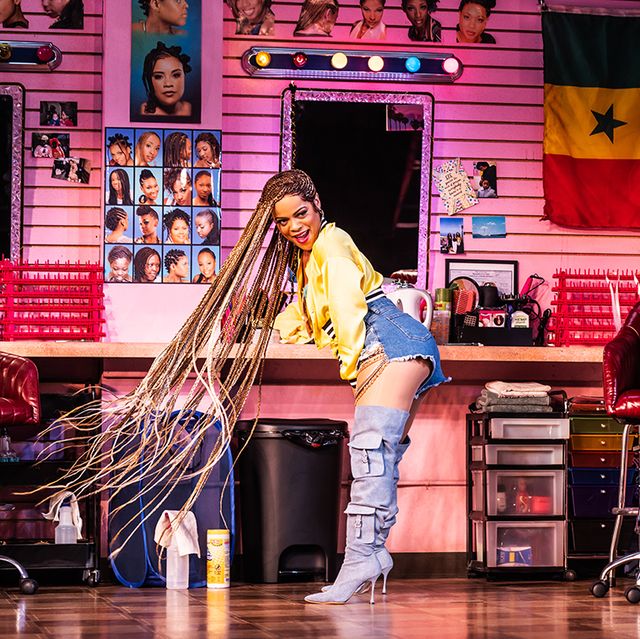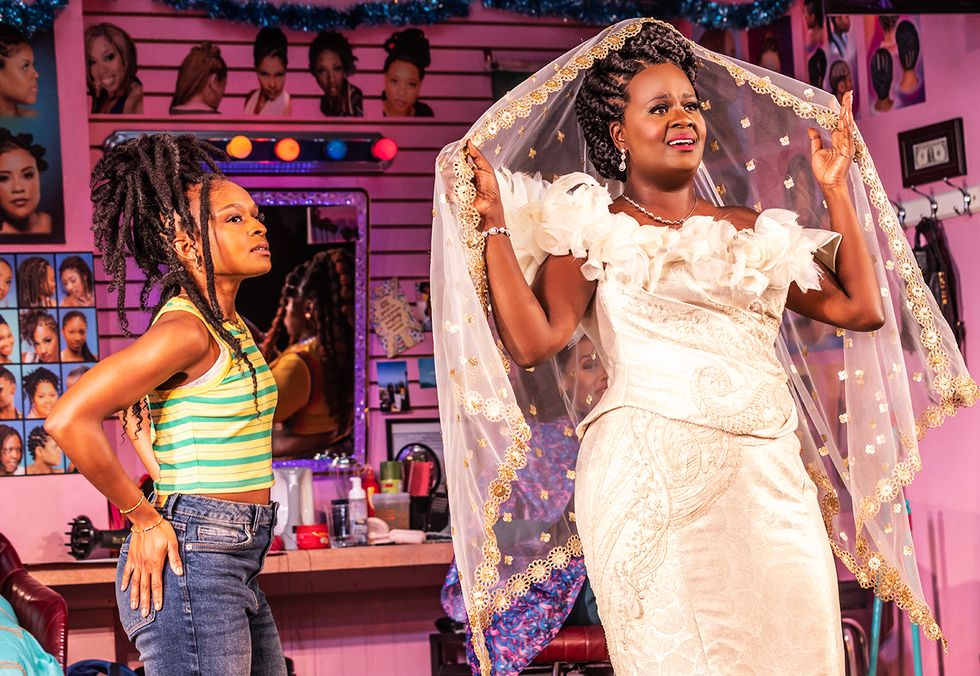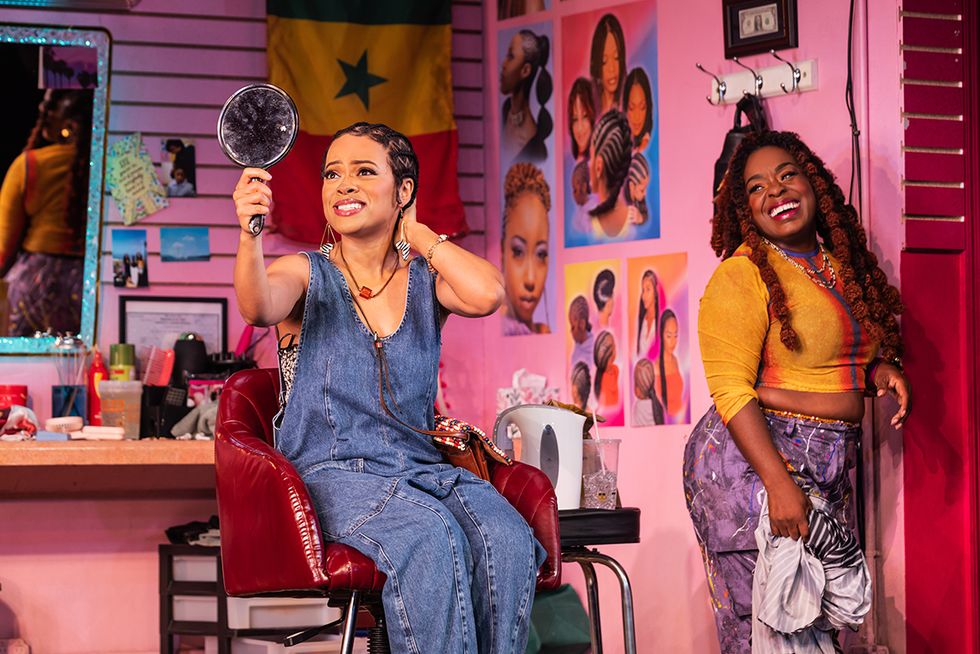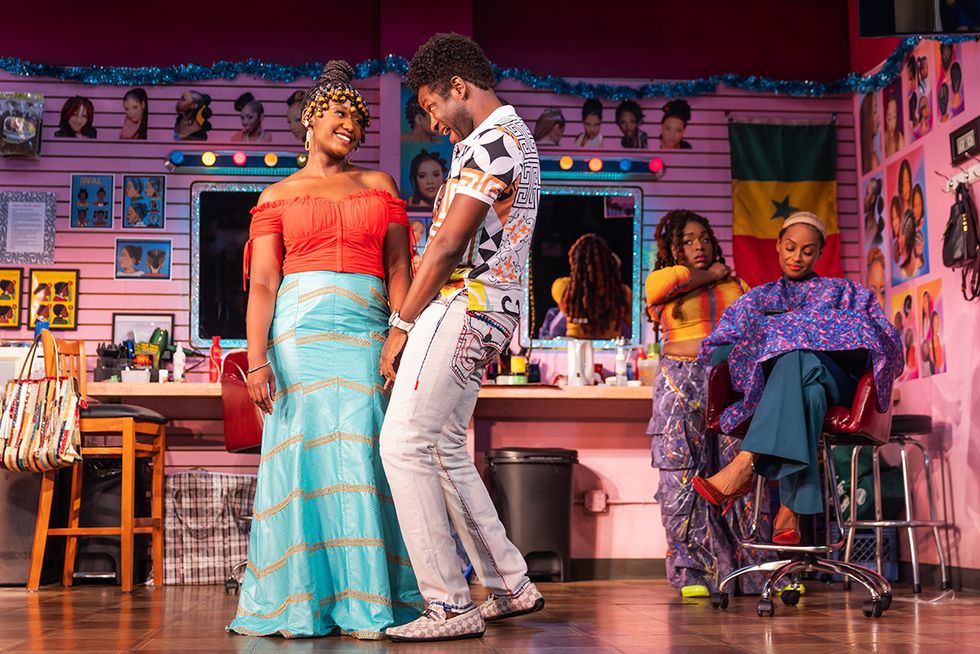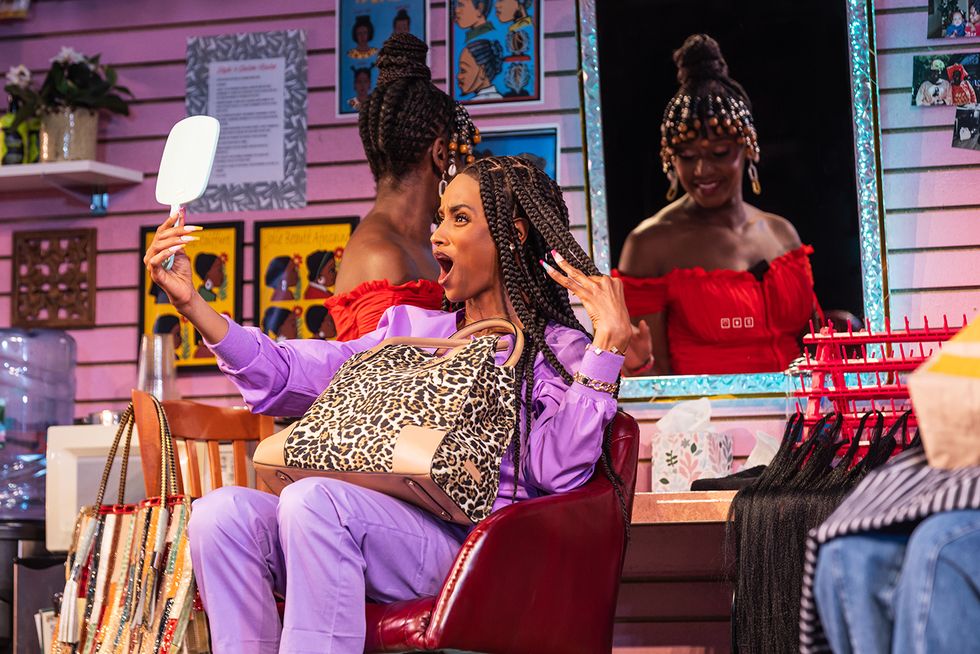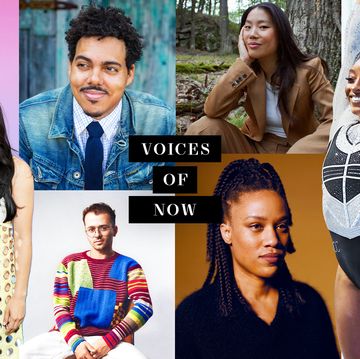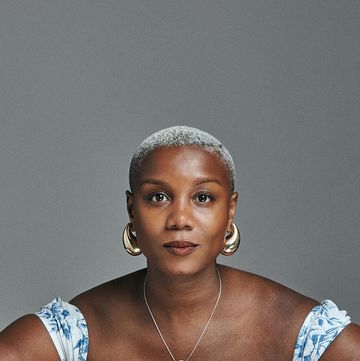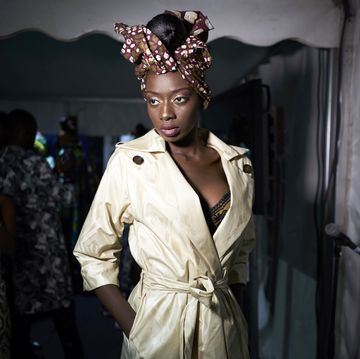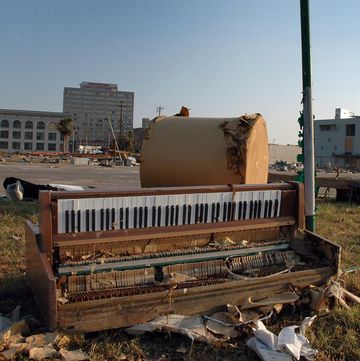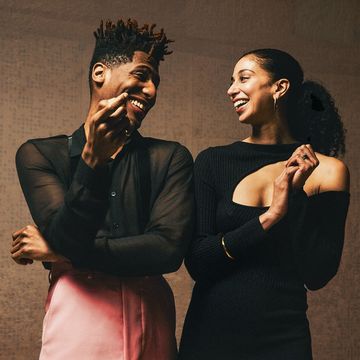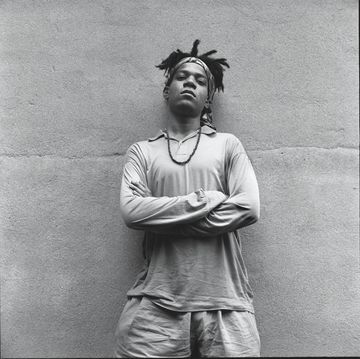For many Black women, the African hair braiding salon is a space where so much happens; conversations around politics and home life occur, people stop by and sell goods, and interpersonal relationships constantly evolve. As the daughter of a Harlem-based hair braider from Mali, I am intimately familiar with this environment—many of my formative memories were shaped in the hair salon.
Written by Ghanaian-American playwright Jocelyn Bioh, Jaja’s African Hair Braiding invites audiences to observe an imaginary Harlem salon and its customers and hairdressers over the course of a day. The cast is Black, as is the majority of the creative team—a rarity on Broadway. I spoke with the cast and crew to understand how they worked together to bring this often overlooked world to life.
Bioh tells Harper’s Bazaar, “The hair braiding shop is so vibrant, full of so many unique characters, different people—it’s just a very unique melting pot of Africa.” A fellow native New Yorker who grew up going to salons, she is no stranger to writing plays about Black experiences. Her past work includes Nollywood Dreams and School Girls; Or, The African Mean Girls Play, which both ran at MCC Theater. A New York Times review praised School Girls’ exploration of colorism and American cultural influence in a Ghanaian boarding school.
Of Jaja’s African Hair Braiding, Bioh says, “I knew I would always write about the hair braiding shop. I just didn’t know what the center force of the play would be. An idea came to me like four or five years ago, and I decided to write it and miraculously found myself debuting the play on Broadway, which almost never happens.” Jaja’s and other Black plays on Broadway recently (like the revivals of August Wilson’s The Piano Lesson and Topdog/Underdog by Suzan-Lori Parks) come in the wake of a 2020 letter—organized by top Black talents in theater—that called for more BIPOC productions on American stages. According to a report released by the Asian American Performers Action Coalition, 10.4 percent of directors and 11.7 percent of writers in productions during New York City’s 2018–2019 theater season were Black. The Blackness of the new play is part of what sparked Tony winner LaChanze’s involvement with Jaja’s as a producer. She notes, “This is … a Black playwright, a Black female director, and Black producers promoting a show. I want to be a part of that. I want to be part of that movement.”
Bioh’s research involved pulling from personal experience as a customer at hair salons. “The process was really just thinking about all of the different braiders I’ve known, I’ve gone to, and just deciding on what characteristics I would put into each of them that felt familiar, especially to people who spent a lot of time in a hair braiding shop.”
For Nana Mensah, who plays Aminata, there was freedom in playing a character who is openly imperfect. Aminata is a Senegalese braider in the salon who is the “sidekick in gossip and drama” of fellow braider Bea.
According to Mensah, Aminata “is not somebody who is really good at her job, her life. And that was really freeing … she doesn’t have to be a rocket scientist. This is somebody who came to this country, maybe through France, went from Senegal to France to New York, who loves her scratch-off tickets, who loves her man—even though he’s incredibly problematic—and loves her kid, and is okay at her job. And that’s okay. She’s just kind of like walking this middle ground. … So that’s been really fun to play around with.”
In learning to embody her character, she says, “I asked costumes to be able to get my character’s shoes, because I feel like that was so informative. [Aminata] is someone who probably should be wearing, like, Crocs or something considering she’s on her feet all day, but she doesn’t. It informs how she moves in the world, with her bedazzled kitten heels.”
Providing convincing outfits and hair are a huge part of bringing the cast to life in a production centered around the beauty industry. “This play has had the most specificity around hair that I’ve ever worked with, which is exciting as a wig designer. You have a road map,” says Nikiya Mathis, who designed hair and wigs for Jaja’s. “They talk about knotless braids, we talk about micro braids, we talk about cornrows with zigzag parts … or we talk about sewing weaves.” Part of Mathis’s research for this play also included visiting salons in Harlem to see what styles braiders were wearing and doing, and “what their space looked like. What I’m always interested in is the range of styles and looks and desires that Black women want for their hair. I ask, ‘Okay, well, what else would happen? What don’t we see on this stage? What can we possibly show within the time given?’”
Whitney White, the play’s director, says, “I was drawn to the play because of my own personal connections to that space and those women. And also just the technical and aesthetic way [Jocelyn] laid out the story on the page was so excellent. It wasn’t a big leap to kind of make [the characters] feel real because the language is so real, [and] we all had so much experience of who these women were. I was attracted as a Black woman with proximity to these spaces and also as an artist who was blown away by how Jocelyn put the story on the page.” She expresses her appreciation for how Bioh captured the salon shop personalities. “The owner, the customer who comes in who’s your favorite customer, the customer who comes in who’s the rudest customer. I feel like every salon space, not just African braiding spaces ... but all of these spaces have these iconic, iconic characters and Jocelyn distilled the essence of who they were. And so, it wasn’t a big leap to kind of make them feel real because the language is so real, but we all had so much experience of who these women were.”
For research, White “looked at a lot of artwork because braids are having a moment,” she says. “Let’s talk about it. If you walk around Harlem, if you get on the A train, if you come to Bed-Stuy, you’re going to see women with locs, with twists, with braids, with styles, with patterns—it is the moment. So there was real-world research of looking around, seeing what the people are wearing and doing. I talked to a lot of salon owners in my neighborhood … I feel like it’s very much a part of the zeitgeist.”
Whether or not audiences have personal experience in hair salons, the creators behind Jaja’s African Hair Braiding hope they walk away with an understanding, respect, and maybe empathy for African hair braiders. “I do believe that through the intensely personal, you get the universal,” White notes.
Bioh reflects, “I think at the real heart of it is an immigration story, and what a lot of these women went through in search of the American dream, whatever that was to them. In a post-Trump era, the face of immigration has kind of only been one face, and I think I would really like to diversify what people think of when they think of immigration stories.”
“My plays and my work are always in service to, in dedication to, people of the Diaspora,” says Bioh. Jaja’s African Hair Braiding is a tribute to many of the African braiders who are unseen, capturing how they move through an environment that is their workspace and world in many ways.
